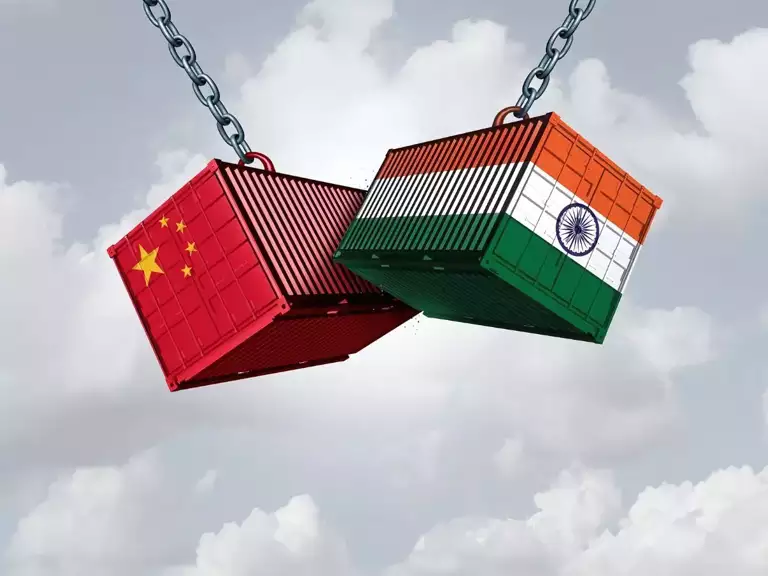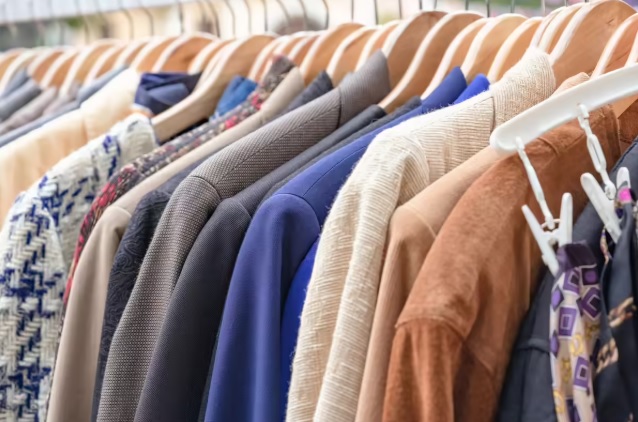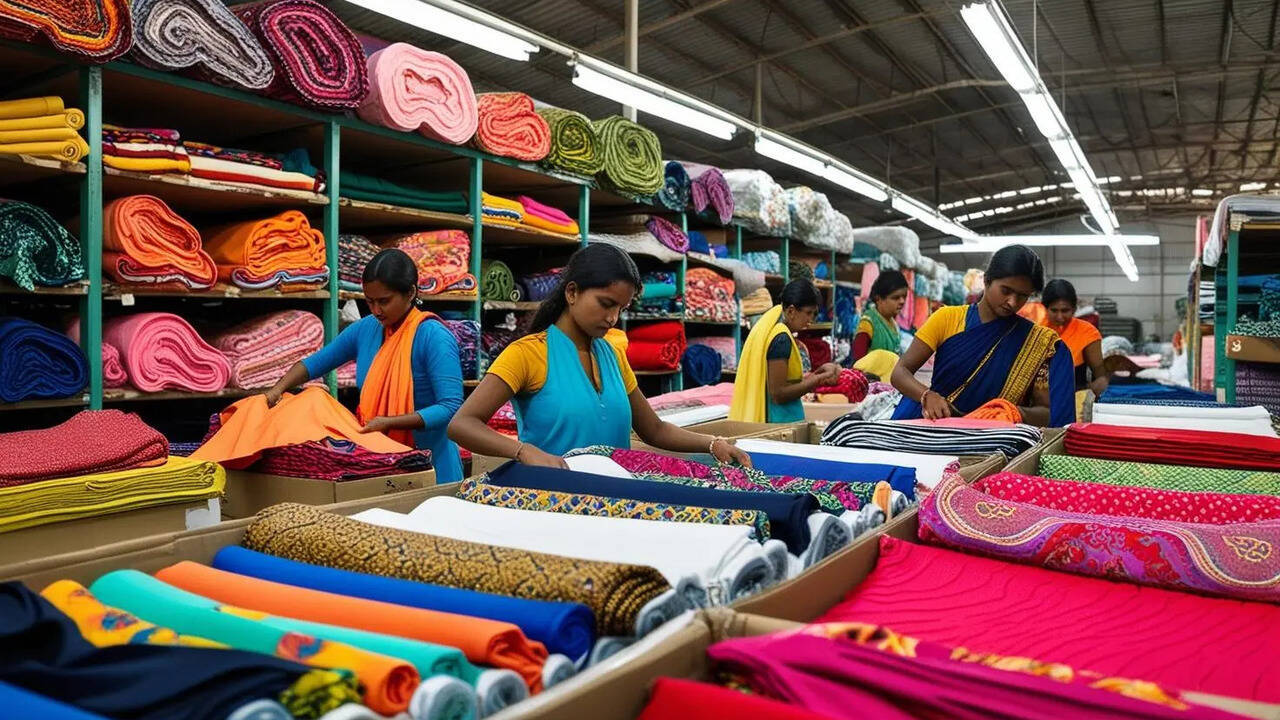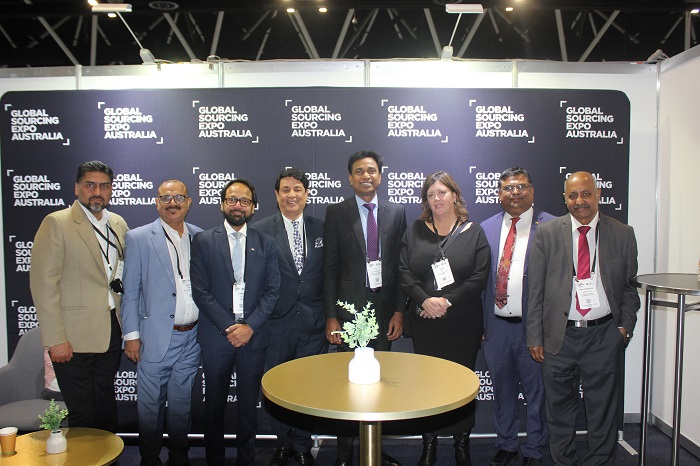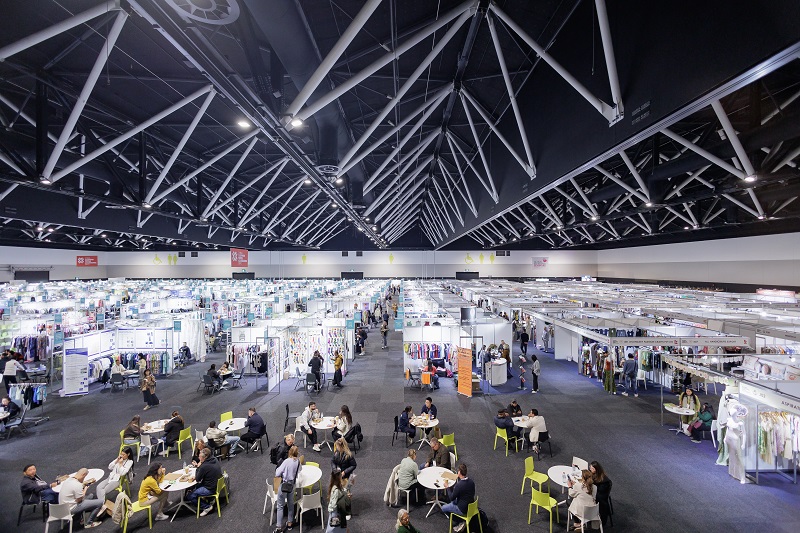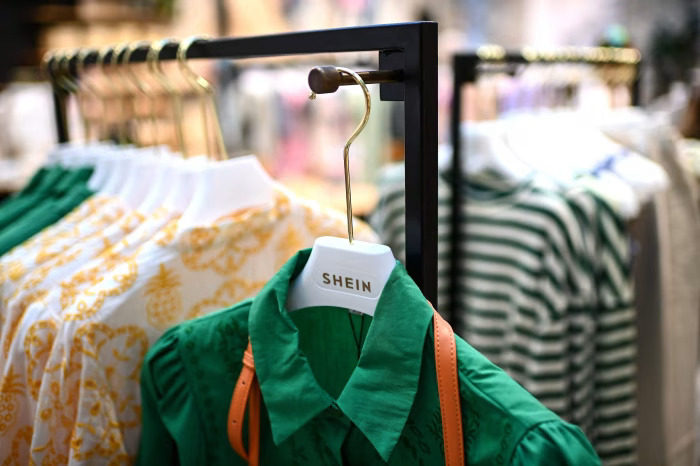FW
Indorama which has spinning mills in countries like Indonesia, Uzbekistan, Sri Lanka and Turkey, has commissioned its 100,000th Zinser spindle machine. The company now has around 1,40,000 Zinser spindles. The compact spinning machines process 100 per cent combed cotton to produce particularly high quality compact yarn in counts. They are integrated into a fully automated linked system. For many years, Indorama has been producing yarns of 100 per cent polyester on Zinser 351 ring spinning machines.
For years Indorama has been producing over 1,00,000 tons of ring yarn from polyester, viscose, cotton and blends on Zinser ring spinning machines. The self-cleaning compact spinning technology guarantees the desired compact yarn quality over a long period. This year Zinser delivered over 40,000 2Impact FX compact spindles to Indorama.
Indorama Synthetics is one of the top 10 manufacturers in the industry. Zinser, based in Germany, is known worldwide for expertise in the area of welding and cutting technology. It is a specialist for high-end oxy-fuel technology, hot air welding devices for professional use and a wide range of cutting systems. It is a leading manufacturer of guiding machines for cutting thicknesses from 0.8 to 600 mm.
www.zinser.de/
Pakistan’s production of cotton bales so far this season has fallen 33.5 per cent compared to the same period last year. The estimate is that the country is not going to produce more than 9.7 million bales this season, significantly lower than last season’s production of 14.9 million bales.
The spinning industry’s annual consumption of cotton stands at around 14.5 million bales. The industry has so far booked around 2.5 million cotton bales for imports, out of which two million bales have been imported from India. Imports could touch 3.5 to four million bales.
Due to the short crop, the spinning industry could only purchase 7.271 million bales compared to 11.457 million bales in the same period last season. Ginners are also holding lesser stocks of unsold cotton at 1.652 million bales as against 2.016 million bales held in the same period last season.
Heavy rains and floods coupled with inferior quality seed and pesticides have had their toll over the standing cotton crop in Punjab. The crop failure in Punjab is not only going to hit GDP but would also increase unemployment and poverty levels.
Since very little cotton is left back in the fields for picking, only 280 ginning units are currently operating in Punjab compared to 799 that functioned last year in the same period.
London Textile Fair will open its doors from January 13 to 14, 2016. This bi-yearly fair held in January and July every year, is a leading textile trade show in the UK showcasing collections from the most prestigious European mills. It provides an excellent opportunity for them to reach the most influential UK buyers and designers and expand their market.
London is the European fashion capital and represents a key marketplace and central hub for international manufacturers and designers. Visitors will have the unique opportunity to see the latest spring/summer 2017 pre-collections and autumn/winter highlights. Among the regular visitors are leading UK and international buyers: Alexander McQueen, Burberry, Vivienne Westwood, Victoria Beckham, Next, Marks & Spencer, Topshop, Calvin Klein, Debenhams, ZARA, MaxMara and Stella McCartney.
Most visitors are from the UK and comprise some of the most influential buyers and designers from the major high street retail stores as well as independent designers and buyers from their contract manufacturers.
The July 2015 edition had more than 380 European mills divided into four main areas: textiles, accessories and trims, print studios and vintage garments. The modular format of single tables offers an equal opportunity for all, whether a large or a small manufacturer. The London Textile Fair was established in 2007. The first fair had 25 exhibitors.
thelondontextilefair.co.uk/
The 47th Hong Kong Fashion Week for Fall/Winter will run from January 18 to 21, 2016, at the Hong Kong Convention and Exhibition Centre (HKCEC). Organised by the Hong Kong Trade Development Council (HKTDC), the event is expecting about 1,500 exhibitors from 19 countries and regions to showcase their latest fashion designs, collections from international brands, fabrics and accessories.
With this year’s theme being ‘Fashion of Music’, the HKTDC has created a fashion avenue for the fair, which blends different musical genres in ways that complement various styles of fashion and accessories. During the fair, around 30 fashion events, including fashion shows, fashion parades, seminars, forums, and a networking reception are organised to present the latest fashion collections and market intelligence.
This year, companies from Myanmar, Romania, and Uzbekistan join the fair for the first time. The fair features 11 overseas pavilions, including the Chinese mainland, India, Indonesia, and Japan. Multiple zones will be set up to help buyers find sought-after products and providers, including four new zones this year: Women’s Wear, Knitwear, International Fashion Designers’ Showcase, and Fashion Tech, which presents fashion-related high-end technology and apps. Other zones include Emporium De Mode featuring top brands, Fashion Gallery showcasing mid- to high-end fashion, Men in Style, Activewear & Swim Wear, and Denim Arcade.
During the four-day fair, more than 10 fashion, designer and brand collection shows will be organised. The Week also features Hong Kong Brand Management Association, presenting the American diva Taylor Swift’s own brand. Kate Liegey, who is responsible for tailoring Swift’s clothing, will bring the latest Taylor Swift collection on show together with the singer’s single Wildest Dreams from her latest album. The EcoChic Design 2015/16 Grand Final Fashion Show by Redress will be another highlight of the fair.
To provide an effective platform for information exchange among industry leaders, the HKTDC will hold a series of seminars and forums during the Fashion Week, with experts sharing their views and analysing market intelligence. The world-renowned fashion advisory institutions WGSN and Fashion Snoops will also offer forecasts and analyses of the major trends for the 2017 Spring/Summer season. Other plenary seminars include a forum titled “Are Circular Business Models a Viable Solution for the Fashion Industry’s Textile Waste?”, and the seminar “Net-a-Porter: The Game Changer of Online Luxury Fashion”.
www.hktdc.com
Egypt’s Giza-86, long-staple luxury cotton is renowned the world over. However, the government’s decision to divide large acres of land among small farmers and interference at every stage of the production process limited its growth and potential.
Egypt is known for producing eight cotton varieties. Each is grown in separate regions, with a carefully controlled system to make sure they remain uncontaminated by other varieties. Giza-86 has long formed the bulk of the crop, but other even finer varieties, including Giza 45, 87 and 92, have catered to more expensive niche markets. However, later to make quick money, people started packing low quality cotton in between the layers of high quality one, which led to the mixing of superior and inferior seeds. An inventory made a year ago indicated that the impact was such that the country only had enough pure Giza-86 to plant 21,000 hectares.
Adding to the woes, in January 2015, the government announced it would no longer subsidise the cotton crop. However, it changed the decision a few months later. It has now guaranteed a purchase price of 1,400 pounds per qintar (157kg) for the newly rescued Giza-86 seed cotton, which on the open market would have fetched about 800 pounds (Dh373). But it then offered to pay almost as much for common cotton, which was fetching 600 to 700 pounds on the open market.
Now the state-owned cotton holding company that buys the cotton plans to sell the Giza-86 to private traders at 1,520 pounds per qintar, a premium of 120 pounds over the inflated price it has promised farmers. Experts say that because of the government monopoly over cotton purchases, some of the countryʼs 240 licensed traders are likely to go bankrupt. On the other hand, it has put a curb on imports by making it difficult to get licences from the Egyptian quarantine office.
Rhodia, a Solvay Group company, launched the world's first biodegradable polyamide yarn Amni Soul Eco during the 2015 edition of ITMA. The company invested almost five years of research in developing the fibre. It is a polyamide 6.6 textile yarn whose formula has been enhanced so that the properly disposed garments get quickly decomposed in landfills.
Unlike other fibres which take decades to decompose, it only takes about three years for Amni Soul Eco to get absorbed in the soil. Amni Soul Eco offers the many benefits of Rhodia's polyamide for consumers, such as its soft touch, extreme comfort, breathability, moisture management, easy-care, easy washing, and it is easily dyed in different colours so that the industry can produce any kind of garment for all types of segments.
The newly launched product is internationally Oeko-Tex certified (standard 100, class 1) and has been recognized with two awards: the Kurt Pulitzer Prize, awarded by ABIQUIM (an association of chemical industries); and by the American Chamber of Commerce (AMCHAM). Rhodia has already been recognised as the pioneer in introducing the Far Infrared technology with the Emana fibre and biodegradable technology.
www.solvay.com
Geratex participating for the first time in technology exhibition ITMA, introduced its innovative technology for textile wet processing using Ultrasonic, which received a positive response from visitors. It displayed SonicPreg, which is an applicator based on ultrasonics. The product is based on the characteristics of ultrasound technology.
Ultrasound with a frequency of more than 20,000 Hertz is used to invigorate the medium for inducing high absorption and facilitating effective liquor exchange. The most appealing feature of this machine is its adaptability as it can integrate into an existing range, be it singeing, bleaching, mercerizing or washing. Many visiting textile companies finally found an apt solution to their absorption issues. The company received a lot of potential enquiries and finalized orders from Brazil, El Salvador, Turkey and India at ITMA.
Visitors from countries like Argentina, Brazil, Mexico, El Salvador, Honduras, Portugal, Spain, Switzerland, Turkey, Iran, Pakistan, Bangladesh, Indonesia and South Korea visited the Geratex stall to get introduced the innovative solution.
Geratex-india.com
Traders in the currency futures market heavily depend upon the fluctuation of Indian rupee against the other foreign currencies, however, with the Reserve Bank of India's (RBI) decision to intervene in the currency futures, its excessive movement is expected to come under control.
Governor Raghuram Rajan announced last month that the central bank would also trade in the currency derivatives market to "manage excessive volatility and to maintain orderly conditions......" The industry experts are of the opinion that while the RBI’s move may help in regulating the market fluctuations, on the other hand, it would deprive arbitrageurs from benefiting from differential rates in different markets.
Indeed, in its December bulletin, the banking regulator revealed its purchase and sale of $355 million in the currency futures market in September. Currently an exchange member had exposure limit of 15 per cent of market wide open interest. Currency derivatives trading since August 2008 on NSE, has grown with annual/daily trading volume averaging Rs 16,915 crores in FY16 (April-January period), from just Rs 1,167 crores in FY09.
www.rbi.org.in
Bannari Amman Spinning Mills has decided to set up a new garment unit at the Palladam hitech weaving park known as ACCEL Apparels to make knitted garments. The company is infusing Rs 30 crores with a plan to generate employment for almost over 1,000 people in the new unit which is expected to start production by the end of December and reach a full capacity by mid-2016.
The plant will have an annual capacity of producing 6.2 million pieces of knitted garments for men, women and kids. Bannari Amman Spinning turns out cotton yarn, woven and knitted fabrics and garments, as well as wind power generation for captive consumption. A substantial portion of cotton yarn and the entire garment production are exported to different countries. The entire green power generated by windmills is being captively consumed.
The company already has two modern spinning units near Dindigul with an installed capacity of 1,44,240 spindles, a weaving unit located at Karnempettai near Palladam with an installed capacity of 147 looms, a processing unit located at the SIPCOT Industrial Growth Center, Perundurai, to process 3,600 tonnes of fabrics per annum, a knitting unit near Karnempettai to produce 7,200 tonnes of knitted fabrics per annum, a garments unit at Palladam Hi-tech Weaving Park to produce 12 lakh pieces of garments per annum, and 32 windmills with installed capacity of 29.95 mw power.
www.bannarimills.com
Textile mills in north and south India are outraged because of the adulterated cotton coming from Gujarat. Since cotton farmers are holding on to their raw cotton inventories for the prices to improve, ginners are mixing lower quality cotton with higher quality to cater to the demand from other states and reduce losses.
Mills and traders, who procure cotton from Gujarat have said that this year the level of adulteration, which used to be around 10-15 per cent, has climbed to 40 per cent. Same is the case with cotton supplied by ginners from the state of Maharashtra.
A bale of 170 kg raw cotton contains 32 per cent lint, 63 per cent seed and another 5 per cent is waste. The cost to ginners is Rs 8,500 per bale and Rs 500 for production. Ginners are being offered Rs 8,000-8,200 per bale for ginned cotton. After adulteration, the loss is being reduced to Rs 200-300 per bale.
Since even the good quality cotton such as Shankar 6 from Gujarat, is being mixed with lower quality cotton, south Indian mills are now importing it from Africa. Industry insiders have said that imports could further increase if Gujarat ginners don’t stop mixing high and low quality cotton.



